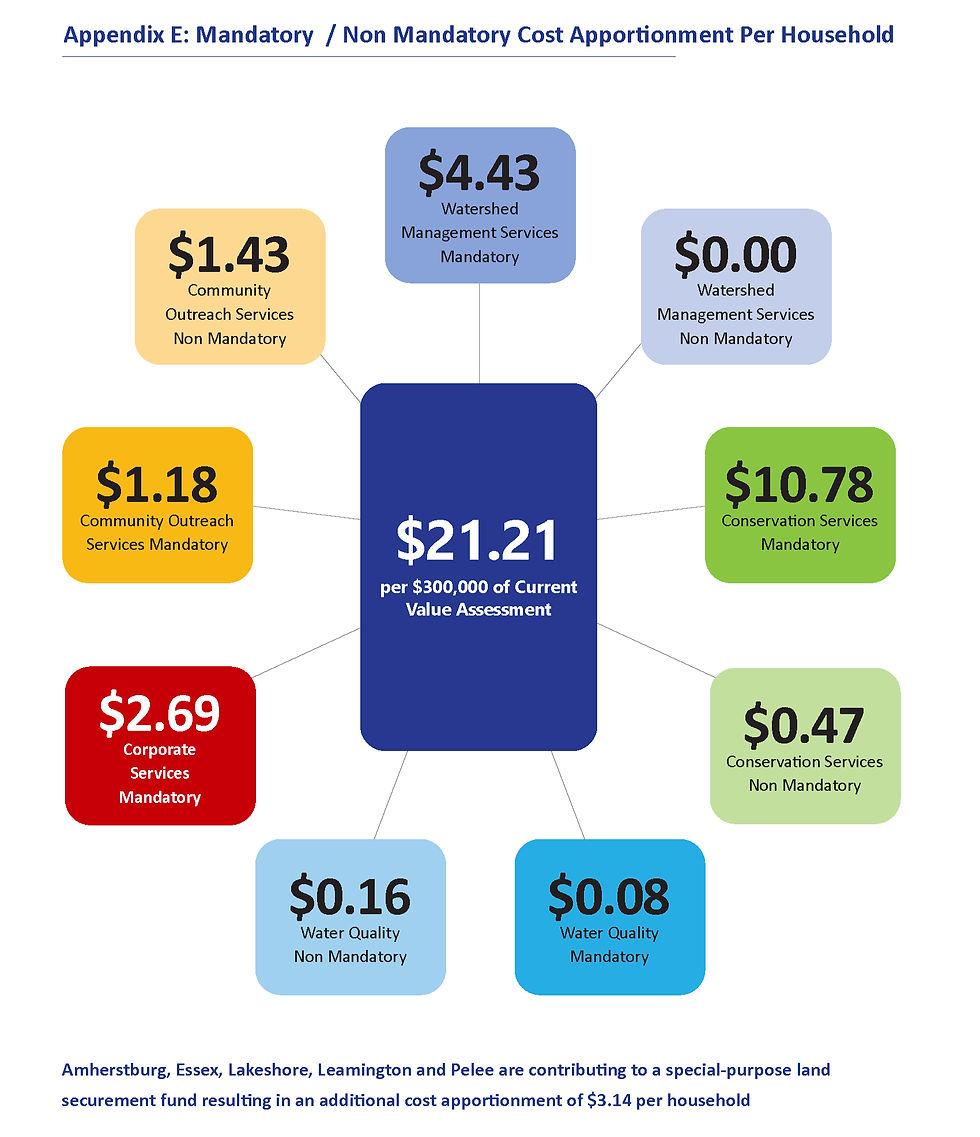ERCA Approves 2025 Budget
- dstuebing
- Feb 18
- 3 min read

The Essex Region Conservation Authority Board of Directors has unanimously approved its 2025 Budget. A few highlights for the year include initiating management plans for the new Collavino Conservation Area and the CASO Greenway trail, planting at least 50,000 trees and creating two new wetlands to improve habitat and biodiversity. Water quality monitoring will continue at greenhouse-influenced streams and a region-wide nutrient reduction program will be implemented. Restoration of the historic horse barn at the John R. Park Homestead is anticipated, and the grand re-opening of the restored museum will be celebrated. A joint labour-management team will be engaged in a pay equity compliance review and the cloud migration of various information systems and data repositories will be completed early this year.
The 2025 budget totals $12 million and will be funded with approximately $3.5 million in municipal cost apportionment, approximately $7.9 million in non-municipal sources, $223k from previous years’ revenues, and $587,000 in transfers from reserves. Of the municipal cost apportionment, $3,053,491 is required to fulfill the Authority’s mandatory obligations.
“The budget also reflects significant multi-year capital and water quality projects,” said Tim Byrne, ERCA CAO. “Grants exceeding $15 million over four years will fund the Hillman Marsh coastal erosion and restoration project, two Detroit River erosion and wetland p
rotection and creation projects, Kingsville-Leamington nutrient research study and region-wide water quality improvement incentives to rural landowners.”
Historically, the local investment of municipal cost apportionment and municipal special project funding has been matched dollar for dollar and significantly exceeded for some programs. Between 2018 and 2024, the Authority received municipal funds of $12.4 million for programs and projects that are categorized as non-mandatory under the Act. During that time, additional non-municipal funds of nearly $15 million were secured to support those very same initiatives.
A recent report to Board outlining the 20-year investment in the Clean Water~Green Spaces initiative has highlighted that since 2003, municipalities have contributed $14.8 million to finance the protection of vulnerable lands of ecological importance; the restoration of habitat and green spaces; and the improvement of water quality in the region. Over the two decades of this program, significant environmental progress has been made, and ERCA obtained an additional $15.2 million dollars in external funding, primarily from the Federal and Provincial Governments along with grants from non-governmental agencies (NGOs) and the Essex Region Conservation Foundation.
“As an integrated watershed management agency, ERCA’s service delivery areas have developed over decades, and include beneficial programs and services that support our collective goals related to ecological, social, and economic health,” added Byrne. “While the Province has identified the core services it deems mandatory, ERCA has secured agreements with each of its nine member municipalities to ensure the suite of Category 3 non-mandatory services it offers to achieve a future of environmental sustainability, will continue to be delivered.” Some examples of these non-mandatory services include tree planting and restoration on non-conservation authority owned lands, education and outreach programs, museum operations at the John R. Park Homestead and water quality monitoring and reporting.
The total cost apportionment toward creating a future of environmental sustainability will increase only 30 cents per household, to $21.21, based on a home assessed at $300,000. For those municipalities that have demonstrated leadership in signing Cost Apportioning Agreements that include a voluntary contribution to a land securement and protection fund, the total cost apportionment is $24.35.
The Essex Region Conservation Authority is a public sector organization established by the Province of Ontario and governed by local municipalities. For more than 50 years, it has provided the organization and delivery of programs and services that further the conservation, restoration, development and management of natural resources in watersheds in Ontario.

Comments